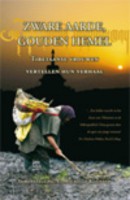Product informatie
- ISBN 9789057891595
- ISBN 10 905789159X
- Druk 1
- Bindwijze Paperback
- Taal Engels
- Uitgever Universiteit Leiden hodn Leiden Universi
- Onderwerp Sociale en historische antropologie
- Beschikbaar sinds 4 Februari 2010
Samenvatting
This book deals with the origins of the present-day National Museum of Ethnology in Leiden, and covers the period from 1816 to 1883. With the foundation of the Royal Cabinet of Rarities in The Hague in 1816, a transformation took place from mainly private collections to national state-owned collections. The founding of the Royal Cabinet was one of the first attempts to create something like a National Museum. This book traces the purposes and motives of private collecting and the emergence of cabinets of curiosities, the composition of the collections, and the move towards a National Museum. At the time of its establishment, the Royal Cabinet of Rarities consisted of a bequest of mainly Chinese objects, objects from the Royal House, and objects concerning the national history of the Netherlands. ... However, the first director of this Royal Cabinet, R.P. van de Kasteele, actively stimulated civil servants and travellers to collect for the cabinet and before long, the focus moved to Japan. Through the VOC settlement at Deshima, VOC officials had a unique access to things Japanese. The three main collectors in Japan in the first half of the nineteenth century were Jan Cock Blomhoff, Johannes van Overmeer Fisscher, and Philip Franz Von Siebold. Von Siebold established himself and his private collection in Leiden in 1832. This collection was considered a branch of the cabinet in The Hague, initially known as Rijks Japansch Museum Von Siebold. Conrad Leemans, then director of the Rijksmuseum voor Oudheden (National Museum of Antiquities), took over the management from Von Siebold in 1859. In 1864, the name changed to Rijks Ethnographisch Museum (National Museum of Ethnography). Leemans concentrated on the Netherlands East Indies, present-day Indonesia. His successor, Serrurier, who took over in 1880, was the first director with an ethnological background. Meanwhile, The Royal Cabinet in The Hague was popular with the public until its closure in 1883 when the ethnographic collections were finally united in Leiden, and where they still form the basis of the National Museum of Ethnology. Rudolf Effert studied Cultural Anthropology in Leiden and obtained his Ph.D. in 2003. His research concerns the history of Dutch Ethnography and Cultural Anthropology in the nineteenth and twentieth centuries, on which he has published several monographs and articles, including Vol. 7 in the CNWS Publications Series. This book is based on extensive research in the archives of the Royal Cabinet of Rarities. In this book, Effert proposes new perspectives on the relationship between the three main collectors in Japan in the first half of the nineteenth century and he argues that the scholarly contributions of two of them, Cock Blomhoff and Overmeer Fisscher, have been seriously underestimated.
Meer boeken van uitgever Universiteit Leiden hodn Leiden Universi
Meer boeken met de onderwerpen Sociale en historische antropologie
Veel gestelde vragenmeer antwoorden
Hoe werkt Resale.nl?
Je kunt op de website advertentie(s) plaatsen van de boeken die u wilt verkopen. Een potentiële koper neemt dan contact met je op om samen een prijs af te spreken en de transactie verder af te handelen. Houdt hierbij onze aanbevelingen voor een veilige transactie in gedachten en voorkomt dat je slachtoffer wordt van oplichting.
Hoe kom ik in contact met de verkoper?
Je kunt een reactie versturen door bij de betreffende advertentie van de verkoper op de knop ‘doe een bod’ te drukken. Je kunt nu een bod doen op de advertentie en een persoonlijk bericht toevoegen. Het verstuurde bod brengt je in contact met de verkoper via e-mail.
Wat zijn de kosten voor het verkopen van mijn studieboeken?
Je kunt geheel gratis gebruik maken van de diensten van Resale.nl. Resale.nl haalt zijn inkomsten uit advertenties.
Hoe kan ik een boek kopen?
Resale.nl werkt globaal op de volgende manier:
- Zoek via het zoekveld het studieboek dat je wilt kopen.
- Uit de zoekresultaten kies je het studieboek waar je geïnteresseerd in bent.
- Op de detailpagina van het studieboek kun je een overzicht vinden van de personen die het studieboek verkopen.
- Je kunt nu een bod plaatsen door op de button te klikken. Het bod wordt via e-mail aan de verkoper verzonden.
- De verkoper van het studieboek neemt contact met je op door een reactie te geven op het bod dat je hebt verzonden. Met de verkoper kun je gezamenlijk een prijs afspreken. Houdt hierbij onze aanbevelingen voor een veilige overdracht in gedachten en voorkom dat u slachtoffer wordt van oplichting.
Hoe weet ik wat ik koop?
Om te achterhalen of wat je koopt ook daadwerkelijk is wat er wordt geadverteerd is het verstandig om bij de verkoper langs te gaan en het aangebodene te bezichtigen. Doe je dit niet, dan loopt je een zeker risico. Onder het kopje ‘Hoe kan ik de kans op misbruik verkleinen’ kun je meer over dit onderwerp vinden.
Kopers over Resale.nl
bart van gijsel
"Ik ben erg tevreden over deze verkoper de familie thus. Goede snelle levering."
Patrice Michel
"De verkoper heeft er alles aan gedaan om het door mij bestelde product zo snel mogelijk naar mij toe te krijgen. Heeft me van iedere stap op de hoogte ..."
marjolein
"Besteeling snel bezorg, in goede staat net zoals beschrijving en goede communicatie met verkoper!"
marjolein
"Goed contact, snel en in goede orde ontvangen. Staat van het boek was zo goed als nieuw!"
hilda1
"goede medewerking en hulp dank u wel"
Tineke
"Het bestelde werd netjes en snel afgeleverd. De prijs was goed."
stacy
"Goed verpaktBoek ziet er mooi uit"
elisa
"Goede levering alleen jammer dat er niet bij was gezet dat er al in geschreven was"
Elly
"Verkoper reageerde snel op mijn emails en heeft ook het boek snel opgestuurd.Het boek was niet van nieuw te onderscheiden. Was waarschijnlijk niet gebruikt. ..."
Gerard+[2]
"Prettig contact gehad en goed zaken kunnen doen."
















